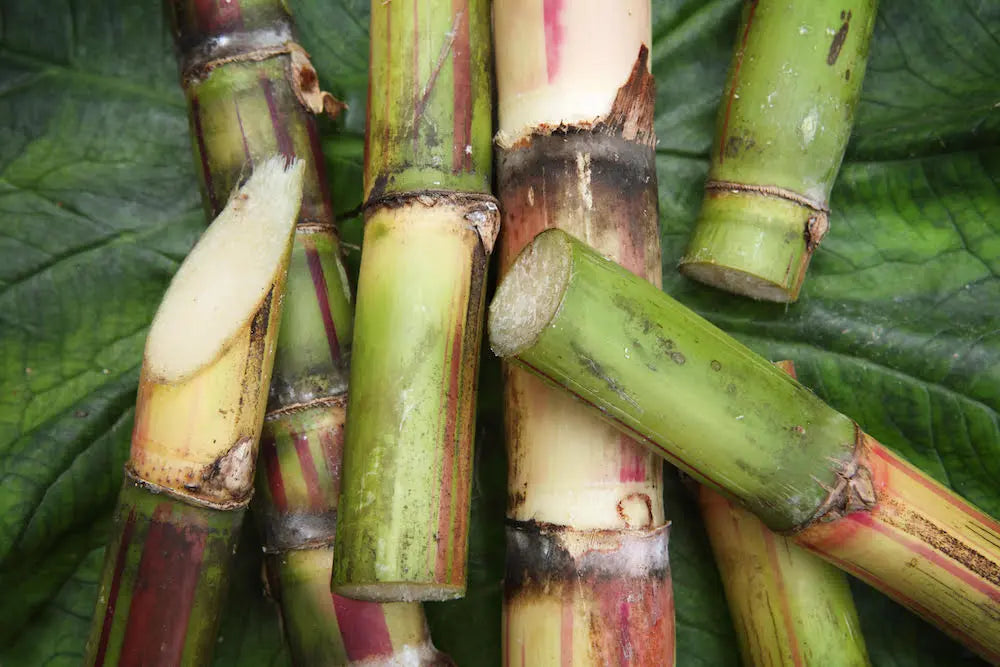
The Different Decaf Methods Explained
Share
The Different Decaf Methods Explained: Ethyl Acetate and Water Process Explained
First off, to be very clear, Frequent Coffee will NEVER sell the synthetic (Methyl Chloride or MC) process of decaf coffee.
Coffee lovers often have a complicated relationship with decaf. While some dismiss it as a compromise on flavor, others rely on it to enjoy their favorite brew without the jitters. But how exactly is the caffeine removed from coffee beans? And how do the methods impact taste and quality?
In this post, we’ll focus on two popular decaffeination methods that strike a balance between preserving flavor and removing caffeine: the Sugarcane or Ethyl Acetate (EA) process and the Water Process. And we’ll also take a brief look at a third, more controversial method: Methylene Chloride decaffeination.
Why Decaf?
Caffeine can interfere with sleep, exacerbate anxiety, or simply be too intense for some people. Decaf offers a solution, allowing coffee drinkers to enjoy the ritual and taste of coffee without the stimulant. But to produce a good decaf coffee, the decaffeination process needs to be gentle on the beans while effective at removing caffeine.
Sugarcane or Ethyl Acetate Process (The Natural Solvent Method)
Also known as the “sugarcane process,” this method uses ethyl acetate, a naturally occurring compound found in fruits and sugarcane. When derived naturally, this process is often marketed as a more “natural” decaffeination method.
How It Works:
-
Steaming green coffee beans to open their pores.
-
Soaking them in a solution of water and ethyl acetate.
-
Rinsing and drying the beans to remove any solvent residue and restore moisture.
Why It’s Popular:
-
Uses a naturally derived solvent (if sourced from sugarcane).
-
Preserves much of the coffee’s original flavor.
-
Efficient and affordable method.
-
Typically this process removes around 95% of the original caffeine in the coffee.

Water Process (Swiss Water® & Mountain Water)
This is a chemical-free decaffeination method that uses solubility and osmosis to remove caffeine.
How It Works:
-
Beans are soaked in green coffee extract (GCE).
-
Caffeine diffuses from the beans into the solution.
-
The caffeine is then filtered out using carbon filters.
-
The decaffeinated beans are dried and packaged.
Why It’s Loved:
-
No chemical solvents—clean and natural.
-
Certified organic and fair trade options available.
-
Excellent flavor retention.
- Typically this process removes up to 99.9% of the original caffeine.
A Word of Caution: Methylene Chloride Decaf
One of the older and cheaper decaffeination methods still used today is the Methylene Chloride process, sometimes labeled as a "direct solvent process." While effective at removing caffeine, this method raises health and environmental concerns.
Why It's Controversial:
-
Methylene chloride is a synthetic chemical solvent also used in paint strippers and industrial cleaning agents.
-
Though the FDA allows trace amounts in decaf coffee (up to 10 parts per million), exposure to high levels of methylene chloride is linked to dizziness, headaches, and in extreme cases, neurological and liver damage.
-
Environmental hazard: It's a volatile organic compound (VOC) that can contribute to air and water pollution.
The Bottom Line:
While many decaf brands using this method adhere to safety limits, more conscious consumers often avoid it due to its synthetic nature and potential long-term risks. If a coffee label doesn’t specify the decaffeination method, there’s a good chance it might be methylene chloride-based—so transparency matters.
Comparing the Three Methods
| Feature | Ethyl Acetate Process | Water Process | Methylene Chloride Process |
|---|---|---|---|
| Solvent Used | Ethyl acetate (natural or synthetic) | None (uses carbon filtration) | Methylene chloride (synthetic) |
| Flavor Retention | Excellent | Good | Moderate to good |
| Organic Options | Often | Frequently | Rare |
| Cost | Higher | Higher | Very low |
| Health Concerns | Low (when natural) | None | Moderate |
| Transparency | Often labeled | Clearly labeled | Sometimes unlabeled |
Which Should You Choose?
Both Sugarcane (EA) and Water Process decaf options offer flavorful cups without the synthetic chemicals. If you're seeking a solvent-free decaf, go for Swiss Water® or Mountain Water decaf - Jitterfree Delight. If you’re comfortable with naturally derived solvents, EA offers a richer taste, preserved for longer - Sidekick. Avoid methylene chloride decaf if you’re concerned about chemical residues or just prefer a more transparent, natural process. Again, Frequent Coffee will NEVER sell the synthetic (Methyl Chloride or MC) process of decaf coffee.
Final Sip:
Decaf has come a long way. Thanks to modern methods like EA and Water Process, you no longer have to choose between your health and a good cup of coffee. Next time you shop, look for those labels—and give decaf the respect it deserves.
